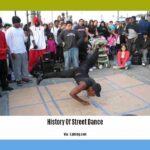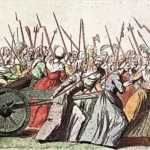New York City in the 1980s: a whirlwind of contradictions, where towering skyscrapers cast shadows on struggling neighborhoods, and a potent blend of creative energy and social unrest fueled a cultural revolution. This wasn’t just the decade of Wall Street excess; it was a crucible that forged hip-hop, redefined art, and tested the city’s indomitable spirit.
A City on the Precipice: Where Grit Met Glamour
The 1980s in New York City were a delicate balancing act. On one hand, the city teetered on the brink of financial ruin, grappling with economic hardship, a rise in crime, and a sense of urban decay. On the other hand, a potent creative energy crackled through the streets, giving rise to groundbreaking music, art, and fashion that would leave an indelible mark on the world.
Imagine this: the gritty streets echoing with the raw beats of early hip-hop, a genre born from the struggles and aspirations of the city’s youth. This wasn’t just music; it was a cultural phenomenon, a form of social commentary and a celebration of resilience. Filmmakers, drawn to the raw authenticity of the city, pointed their lenses at everyday struggles and triumphs, capturing the essence of New York’s indomitable spirit. Graffiti, far from being mere vandalism, transformed buildings into vibrant canvases, blurring the lines between street art and high art.
Fashion, too, reflected the city’s eclectic soul. Designers like Marc Jacobs and Donna Karan rose to prominence, their creations capturing the city’s blend of grit and glamour. Dapper Dan, a true iconoclast, fused high fashion with streetwear, his Harlem atelier becoming a hub for musicians and artists seeking unique, statement-making pieces. “We used to have a TV with a VCR on at all times, playing MTV and the guys coming up,” Dan recalled in an interview. “All the hip-hop artists came [to the atelier].”
This fusion of music, fashion, and art wasn’t merely coincidental; it was a reflection of the interconnectedness of these creative communities. They fed off each other’s energy, drawing inspiration from the city’s gritty streets and transforming them into something new, exciting, and undeniably cool.
However, this creative boom had unforeseen consequences. As artists and entrepreneurs flocked to neglected neighborhoods, drawn by their raw potential and affordable rents, they inadvertently set in motion the forces of gentrification. While not as widespread as it is today, the influx of new residents began to reshape neighborhoods, sometimes displacing the very communities that had given the city its unique character.
The legacy of the 1980s is intricately woven into the fabric of New York City. The city’s relentless hustle, its unapologetic diversity, and its spirit of creative innovation are all echoes of that turbulent yet transformative decade. It’s a reminder that even in the face of adversity, hope, creativity, and the indomitable human spirit can flourish.
The Beat Goes On: What Defined the 1980s in New York?
The 1980s in New York City were a study in contradictions: economic hardship and artistic vibrancy, social unrest and cultural renaissance. Imagine a city grappling with a sputtering economy, rising crime rates, and a growing sense of unease, yet simultaneously giving birth to groundbreaking art, music, and fashion.
This era saw the emergence of hip-hop as a cultural force, its infectious beats and raw lyrics telling stories of struggle, resilience, and urban life. Graffiti artists, armed with spray cans, transformed public spaces into open-air galleries, their murals reflecting the energy and angst of the time. Street art wasn’t just about aesthetics; it was a form of social commentary, a way for marginalized voices to be heard.
New York’s influence on the global stage was undeniable. Its fashion designers were dressing the world, its musicians were topping charts, and its artists were redefining artistic expression. The city was a melting pot of cultures, a place where people from all walks of life came to chase their dreams, leaving their mark on its ever-evolving narrative.
However, the decade wasn’t without its shadows. The economy, while showing signs of recovery, left many behind. Crime rates, fueled in part by the crack epidemic, cast a pall over the city. The emergence of AIDS, a devastating and then-misunderstood disease, instilled fear and uncertainty, particularly within the LGBTQ+ community.
Despite these challenges, New Yorkers persevered. The city’s inherent resilience shone through as communities came together to support each other, demanding change and fighting for a better future. This spirit of activism and social consciousness would go on to shape the city’s identity in the decades to come.
The impact of the 1980s on New York, and indeed the world, is immeasurable. The art, the music, the fashion—they all contributed to a cultural shift that continues to reverberate today. Walk the streets of New York, and you can still feel the pulse of that transformative decade, a testament to the city’s enduring ability to reinvent itself and inspire the world.
A City Under Pressure: How Rough Was New York in the 80s?
The 1980s were a time of immense change and challenges for New York City. The crack epidemic ripped through communities, sending crime rates soaring and leaving devastation in its wake. The city faced near-bankruptcy, resulting in neglected infrastructure, reduced public services, and a sense of unease that permeated everyday life.
Imagine walking down a street where the glitz of Wall Street stood in stark contrast to boarded-up buildings and struggling neighborhoods. The economic disparities were impossible to ignore. While some reveled in the excesses of the “greed is good” era, others struggled to make ends meet, caught in the grip of poverty and neglect.
However, New York City has an unyielding spirit. Even in the face of adversity, New Yorkers found ways to adapt, innovate, and create. This era saw the birth of hip-hop, a raw and powerful expression of urban life that resonated far beyond the boroughs. The streets became canvases for graffiti artists, their vibrant murals reflecting the city’s energy, struggles, and defiant hope. Independent filmmakers captured the grit and resilience of everyday New Yorkers, their stories resonating with audiences hungry for authenticity.
The “roughness” of 1980s New York wasn’t just about statistics; it was about the lived experiences of its residents. It was a city grappling with complex issues, trying to find its footing in a rapidly changing world. Yet, amidst the challenges, there was a sense of community, a shared determination to overcome adversity that would ultimately pave the way for the revitalized city we know today. The 1980s were a crucible, forging a new identity for New York, one tempered by hardship but fueled by the enduring spirit of its people.
The Pulse of the City: Which Clubs Defined 1980s New York?
New York City in the 1980s wasn’t just about struggling neighborhoods and economic anxieties; it was also a hotbed of artistic expression, and its nightclubs were the epicenters of this cultural earthquake. These clubs were more than just places to dance; they were melting pots of music, art, and fashion, shaping the sounds and styles of a generation.
Walking into Danceteria in SoHo was like stepping into another dimension. The industrial-chic space pulsed with an electric mix of new wave, post-punk, hip-hop, and early house music. It wasn’t about fitting in, it was about celebrating individuality. Celebrities and club kids alike flocked to Danceteria, drawn to its anything-goes atmosphere.
Then there was Area in Tribeca, a playground for the avant-garde. This club was all about pushing boundaries and challenging perceptions. With its ever-changing, over-the-top décor and a musical landscape that embraced emerging genres like house and techno, Area became synonymous with experimentation and innovation.
And of course, no conversation about 1980s New York nightlife is complete without mentioning Studio 54. This legendary nightclub needs no introduction. Getting past the velvet ropes meant entering a world of celebrity, glamour, and extravagant parties. Studio 54 was where the elite mingled with artists and musicians, all moving to the rhythm of disco and the pulse of a city that never sleeps.
These clubs, and countless others like them, weren’t just venues; they were cultural institutions. They provided platforms for emerging artists, DJs, and musicians, fostering a sense of community and pushing creative boundaries. The legacy of these clubs extends far beyond the 1980s. They left an indelible mark on New York City’s nightlife and continue to inspire club culture today.
The Artists Who Defined a Decade: Shaping the 1980s New York Art Scene
The 1980s New York art scene was a vibrant tapestry woven from raw energy, social commentary, and a city brimming with creative tension. This wasn’t just about paint on canvas; it was about pushing boundaries, challenging conventions, and reflecting the complex realities of a changing world.
Towering figures like Jean-Michel Basquiat, the Neo-expressionist rebel, captivated the art world with his raw, graffiti-influenced style that tackled themes of race, class, and social injustice. His meteoric rise and tragic death at a young age only added to his mystique, making him a legend of the era.
Keith Haring, with his iconic bold lines and dancing figures, brought pop art to the masses. His work, often infused with social commentary, transcended galleries, appearing on murals, subways, and even clothing, making art accessible to everyone.
And then there was Andy Warhol, the godfather of Pop Art, who continued to challenge perceptions and redefine art’s relationship with commerce and celebrity. In the 1980s, he embraced collaborations, working with younger artists like Basquiat and further cementing his influence on a new generation.
But the 1980s art scene extended far beyond these iconic figures. The East Village, gritty and teeming with creative energy, became a hotbed for artistic experimentation. Artists like Kenny Scharf, Jenny Holzer, and David Wojnarowicz embraced performance art, installations, and mixed media, blurring the lines between art forms and challenging traditional notions of what art could be.
The rise of street art was another defining aspect of the era. Artists like Futura 2000 and Lady Pink brought graffiti from the subways to galleries, forcing the art world to reconsider its definitions. Their work wasn’t just about aesthetics; it was about reclaiming public spaces, expressing social commentary, and challenging the established art world.
Photography, too, underwent a transformation. Nan Goldin, with her raw and intimate portraits, gave voice to the LGBTQ+ community, documenting their lives, loves, and struggles with unflinching honesty. Robert Mapplethorpe, though often controversial, pushed boundaries with his photography, exploring themes of sexuality and the human form.
The 1980s New York art scene was a melting pot of styles, ideas, and personalities. It was a time of immense creativity, fueled by social change, economic disparity, and a generation determined to make their voices heard. The artists of this era, whether they achieved fame or quietly contributed to the cultural dialogue, left behind a legacy that continues to inspire and challenge us today.
- 1940 penny value
- 90s rave fashion
- Antebellum era
- Marc Jacobs
- Donna Karan
- Dapper Dan
- Street art
- Danceteria
- Area
- Studio 54
- SYBAU See You Baby Meaning: Gen Z Slang Evolves - July 1, 2025
- Unlock Your Inner Youth: Lifestyle Secrets for a Vibrant Life - July 1, 2025
- Decode SYBAU Meaning: Gen Z Slang Explained - July 1, 2025






